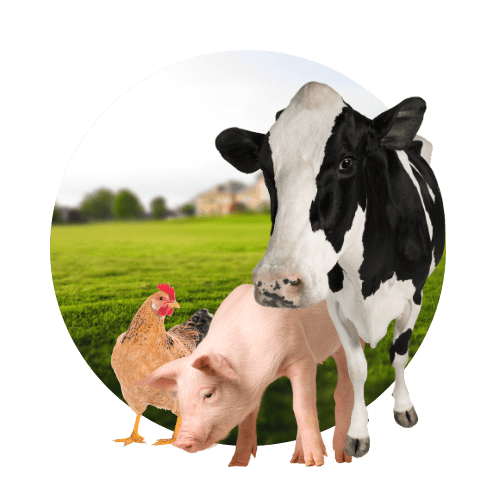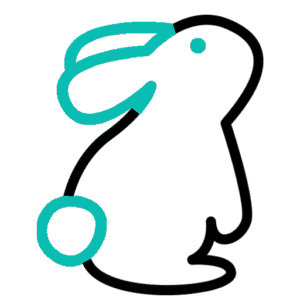একটি ক্রমবর্ধমান আন্তঃসংযুক্ত বিশ্বে, সমাজগুলি যে উপায়ে প্রাণী হত্যাকে উপলব্ধি করে এবং অনুশীলন করে তা তাদের সাংস্কৃতিক, ধর্মীয় এবং নৈতিক ল্যান্ডস্কেপ সম্পর্কে অনেক কিছু প্রকাশ করে। অ্যাবি স্টেকিটি দ্বারা রচিত এবং সিনক্লেয়ার, এম., হটজেল, এমজে, লি, এনওয়াইপি, এট আল-এর একটি বিস্তৃত অধ্যয়নের উপর ভিত্তি করে "প্রাণী হত্যার উপর বৈশ্বিক দৃষ্টিভঙ্গি: 14 জাতির অন্তর্দৃষ্টি" নিবন্ধটি এই বৈচিত্র্যময় উপলব্ধি এবং বিশ্বাসগুলিকে খুঁজে বের করে। . 28 মে, 2024-এ প্রকাশিত, এই অধ্যয়নটি বিভিন্ন অঞ্চলের লোকেরা জবাই করার সময় প্রাণীদের কল্যাণকে কীভাবে দেখেন তার একটি সংক্ষিপ্ত চেহারা প্রদান করে, এটি এমন একটি বিষয় যা সীমান্ত জুড়ে গভীরভাবে অনুরণিত হয়।
প্রতি বছর, মাছ ব্যতীত 73 বিলিয়নেরও বেশি প্রাণী বিশ্বব্যাপী জবাই করা হয়, যেখানে প্রাক-বধ অত্যাশ্চর্য থেকে শুরু করে সম্পূর্ণ সচেতন হত্যার পদ্ধতি রয়েছে। সমীক্ষাটি 14টি দেশ জুড়ে 4,291 জন ব্যক্তিকে জরিপ করেছে - এশিয়া থেকে দক্ষিণ আমেরিকা পর্যন্ত মহাদেশ বিস্তৃত - জবাইয়ের সময় প্রাণী কল্যাণ সম্পর্কে তাদের মতামত বোঝার জন্য। ফলাফলগুলি সাংস্কৃতিক, ধর্মীয় এবং অর্থনৈতিক কারণগুলির দ্বারা আকৃতির মনোভাবের একটি জটিল টেপেস্ট্রি প্রকাশ করে, তবুও পশুদের দুর্ভোগ কমানোর জন্য একটি প্রায় সর্বজনীন উদ্বেগও তুলে ধরে।
গবেষণাটি জবাই অনুশীলন সম্পর্কে জনসাধারণের জ্ঞানের উল্লেখযোগ্য ফাঁকগুলিকে আন্ডারস্কোর করে, এমনকি কঠোর পশু কল্যাণ আইন সহ দেশগুলিতেও ব্যাপক ভুল ধারণা প্রকাশ করে৷ উদাহরণস্বরূপ, মার্কিন অংশগ্রহণকারীদের একটি উল্লেখযোগ্য অংশ জানত না যে প্রাক-বধ অত্যাশ্চর্য বাধ্যতামূলক এবং নিয়মিত অনুশীলন করা হয়। এই জ্ঞানের ফাঁক থাকা সত্ত্বেও, সমীক্ষায় দেখা গেছে যে পশুদের প্রতি সমবেদনা একটি সাধারণ থ্রেড, একটি দেশ ব্যতীত বেশিরভাগ অংশগ্রহণকারী একমত যে জবাইয়ের সময় পশুদের কষ্ট প্রতিরোধ করা গুরুত্বপূর্ণ।
এই বৈচিত্র্যময় দৃষ্টিভঙ্গিগুলি অন্বেষণ করে, নিবন্ধটি শুধুমাত্র প্রাণী কল্যাণের বৈশ্বিক অবস্থার উপর আলোকপাত করে না বরং খাদ্য ব্যবস্থার মধ্যে উন্নত জনশিক্ষা এবং স্বচ্ছতার প্রয়োজনীয়তার দিকেও মনোযোগ দেয়। এই অধ্যয়ন থেকে সংগৃহীত অন্তর্দৃষ্টিগুলি বিশ্বব্যাপী পশু জবাইয়ের ক্ষেত্রে আরও মানবিক অভ্যাস গড়ে তোলার লক্ষ্যে নীতিনির্ধারক, পশু কল্যাণ সমর্থক এবং ভোক্তাদের জন্য মূল্যবান দিকনির্দেশনা প্রদান করে।
### ভূমিকা
একটি ক্রমবর্ধমান আন্তঃসংযুক্ত বিশ্বে, সমাজগুলি যে উপায়ে প্রাণী হত্যাকে উপলব্ধি করে এবং অনুশীলন করে তা তাদের সাংস্কৃতিক, ধর্মীয় এবং নৈতিক ল্যান্ডস্কেপ সম্পর্কে অনেক কিছু প্রকাশ করে। অ্যাবি স্টেকিটি দ্বারা রচিত এবং সিনক্লেয়ার, এম., হটজেল, এমজে, লি, এনওয়াইপি, এট আল-এর একটি ব্যাপক অধ্যয়নের উপর ভিত্তি করে "প্রাণী হত্যার উপর বিশ্বব্যাপী দৃষ্টিভঙ্গি: 14টি দেশ থেকে অন্তর্দৃষ্টি" প্রবন্ধটি এই বিষয়গুলি নিয়ে আলোচনা করে বিভিন্ন উপলব্ধি এবং বিশ্বাস। 28 মে, 2024-এ প্রকাশিত, এই অধ্যয়নটি বিভিন্ন অঞ্চলের লোকেরা জবাই করার সময় প্রাণীদের কল্যাণকে কীভাবে দেখেন তার একটি সংক্ষিপ্ত দৃষ্টিভঙ্গি সরবরাহ করে, একটি বিষয় যা সীমান্ত জুড়ে গভীরভাবে অনুরণিত হয়।
প্রতি বছর, 73 বিলিয়নেরও বেশি প্রাণী, মাছ ব্যতীত, বিশ্বব্যাপী জবাই করা হয়, যেখানে প্রাক-বধ অত্যাশ্চর্য থেকে শুরু করে সম্পূর্ণ সচেতন হত্যার পদ্ধতি রয়েছে। সমীক্ষাটি 14টি দেশ জুড়ে 4,291 জন ব্যক্তিকে জরিপ করেছে - এশিয়া থেকে দক্ষিণ আমেরিকা পর্যন্ত মহাদেশগুলি বিস্তৃত - জবাইয়ের সময় প্রাণী কল্যাণ সম্পর্কে তাদের মতামত বোঝার জন্য৷ ফলাফলগুলি সাংস্কৃতিক, ধর্মীয়, এবং অর্থনৈতিক কারণগুলির দ্বারা আকৃতির মনোভাবের একটি জটিল টেপেস্ট্রি প্রকাশ করে, তবুও পশুদের দুর্ভোগ কমানোর জন্য একটি প্রায় সর্বজনীন উদ্বেগও তুলে ধরে৷
গবেষণাটি ‘বধের চর্চা’ সম্পর্কে জনসাধারণের জ্ঞানের উল্লেখযোগ্য ফাঁককে আন্ডারস্কোর করে, এমনকি কঠোর পশু কল্যাণ আইন রয়েছে এমন দেশেও ব্যাপক ভুল ধারণা প্রকাশ করে। উদাহরণস্বরূপ, মার্কিন অংশগ্রহণকারীদের একটি উল্লেখযোগ্য অংশ ‘অজানা’ ছিল যে প্রাক-বধ অত্যাশ্চর্য বাধ্যতামূলক এবং নিয়মিত অনুশীলন করা হয়। এই জ্ঞানের ফাঁক থাকা সত্ত্বেও, গবেষণায় দেখা গেছে যে পশুদের প্রতি সমবেদনা একটি সাধারণ থ্রেড, যেখানে একটি দেশ ব্যতীত সমস্ত অংশ জুড়ে অংশগ্রহণকারীদের সংখ্যাগরিষ্ঠ অংশ সম্মত যে জবাইয়ের সময় পশুদের কষ্ট প্রতিরোধ করা গুরুত্বপূর্ণ।
বৈচিত্র্যময় দৃষ্টিভঙ্গিগুলি অন্বেষণ করে , নিবন্ধটি শুধুমাত্র প্রাণী কল্যাণের বৈশ্বিক অবস্থার উপর আলোকপাত করে না বরং খাদ্য ব্যবস্থার মধ্যে উন্নত জনশিক্ষা ও স্বচ্ছতার প্রয়োজনীয়তার দিকেও মনোযোগ দেয়৷ এই অধ্যয়ন থেকে সংগৃহীত অন্তর্দৃষ্টি নীতিনির্ধারকদের জন্য মূল্যবান দিকনির্দেশনা প্রদান করে, প্রাণী কল্যাণের প্রবক্তা এবং ভোক্তাদের লক্ষ্য করে বিশ্বব্যাপী পশু জবাইয়ের ক্ষেত্রে আরও মানবিক অভ্যাস গড়ে তোলার লক্ষ্যে।
সারাংশ লিখেছেন: অ্যাবি স্টেকিটি | মূল অধ্যয়ন দ্বারা: Sinclair, M., Hotzel, MJ, Lee, NYP, et al. (2023) | প্রকাশিত: 28 মে, 2024
পশু জবাই সম্পর্কে ধারণা এবং বিশ্বাস দেশ অনুসারে পরিবর্তিত হয়, তবে জবাইয়ের সময় পশু কল্যাণ সারা বিশ্বের মানুষের কাছে গুরুত্বপূর্ণ।
বিশ্বব্যাপী প্রতি বছর 73 বিলিয়নেরও বেশি প্রাণী (মাছ বাদে) জবাই করা হয়, এবং বধের পদ্ধতি অঞ্চল থেকে অঞ্চলে পরিবর্তিত হয়। উদাহরণ স্বরূপ, পৃথিবীর অনেক জায়গায়, কষ্ট কমাতে পশু জবাই করার আগে হতবাক হয়ে যায়। বর্তমান বিজ্ঞান পরামর্শ দেয় যে প্রাক-বধ অত্যাশ্চর্য, যখন সঠিকভাবে প্রয়োগ করা হয়, জবাই প্রক্রিয়া চলাকালীন কিছু স্তরের কল্যাণ প্রদানের জন্য একটি সর্বোত্তম অনুশীলন। কিন্তু বিশ্বের কিছু অংশে, সম্পূর্ণ সচেতন থাকা অবস্থায় পশু জবাই করা হয় এবং বিশ্বের বিভিন্ন অংশে জবাই সম্পর্কে জনসাধারণের ধারণা তুলনামূলকভাবে অজানা। এই গবেষণায়, গবেষকরা বিশ্বজুড়ে বধ সম্পর্কে উপলব্ধি এবং জ্ঞানের পরিমাপ করতে বেরিয়েছিলেন।
বিভিন্ন দৃষ্টিভঙ্গি ক্যাপচার করার জন্য, গবেষকরা 2021 সালের এপ্রিল থেকে অক্টোবরের মধ্যে 14টি দেশে 4,291 জন ব্যক্তির উপর জরিপ করেছেন: অস্ট্রেলিয়া (250), বাংলাদেশ (286), ব্রাজিল (302), চিলি (252), চীন (249), ভারত (455), মালয়েশিয়া ( 262), নাইজেরিয়া (298), পাকিস্তান (501), ফিলিপাইন (309), সুদান (327), থাইল্যান্ড (255), যুক্তরাজ্য (254), এবং মার্কিন যুক্তরাষ্ট্র (291)। সমগ্র নমুনার সংখ্যাগরিষ্ঠ (89.5%) রিপোর্ট করেছে যে তারা প্রাণী খেয়েছে।
সমীক্ষায় 24টি প্রশ্ন রয়েছে যা 14টি দেশের প্রতিটিতে সাধারণ জনগণের জন্য উপযোগী ভাষায় অনুবাদ করা হয়েছিল। সমীক্ষা পরিচালনার জন্য গবেষকরা দুটি পদ্ধতি ব্যবহার করেছেন: 11টি দেশে, গবেষকরা এলোমেলোভাবে জনসাধারণের সেটিংসে জরিপটি মুখোমুখি করার জন্য লোকেদের নির্বাচন করেছেন; তিনটি দেশে, গবেষকরা অনলাইনে জরিপ পরিচালনা করেছেন।
সমীক্ষার একটি মূল ফলাফল ছিল যে বাংলাদেশ ব্যতীত সমস্ত দেশের অধিকাংশ অংশগ্রহণকারী এই বিবৃতির সাথে একমত, "এটা আমার কাছে গুরুত্বপূর্ণ যে পশু জবাইয়ের সময় ক্ষতিগ্রস্থ হয় না।" গবেষকরা এই ফলাফলটিকে প্রমাণ হিসাবে ব্যাখ্যা করেছেন যে প্রাণীদের প্রতি সমবেদনা একটি প্রায় সর্বজনীন মানব বৈশিষ্ট্য।
দেশগুলির মধ্যে আরেকটি সাধারণতা ছিল জবাই সম্পর্কে জ্ঞানের অভাব। উদাহরণস্বরূপ, থাইল্যান্ড (42%), মালয়েশিয়া (36%), যুক্তরাজ্য (36%), ব্রাজিল (35%), এবং অস্ট্রেলিয়া (32%) অংশগ্রহণকারীদের প্রায় এক-তৃতীয়াংশ উত্তর দিয়েছিল যে তারা প্রাণী কিনা তা জানে না জবাই করার সময় সম্পূর্ণ সচেতন ছিল। উপরন্তু, মার্কিন যুক্তরাষ্ট্রে অংশগ্রহণকারীদের প্রায় 78% আত্মবিশ্বাসী ছিল যে জবাই করার আগে প্রাণীরা হতবাক হয় নি যদিও আইন দ্বারা প্রাক-বধ অত্যাশ্চর্য প্রয়োজন এবং মার্কিন যুক্তরাষ্ট্রে নিয়মিত অনুশীলন করা হয়। গবেষকরা জোর দিয়েছিলেন যে জবাই সম্পর্কে ব্যাপক বিভ্রান্তি থাকা সত্ত্বেও সাধারণ জনগণ খাদ্য ব্যবস্থায় (যেমন, উৎপাদক, খুচরা বিক্রেতা এবং সরকার) যথেষ্ট আস্থা রাখে।
দেশ ভেদে বধ সম্পর্কে ধারণা ভিন্ন। বধের নিম্নলিখিত দিকগুলির প্রতিটিতে, অংশগ্রহণকারীরা তাদের স্বাচ্ছন্দ্য, বিশ্বাস বা পছন্দকে 1-7 এর স্কেলে রেট করেছে:
- বধ্যভূমির সাক্ষ্যদানে স্বাচ্ছন্দ্য —থাইল্যান্ডে সর্বনিম্ন আরাম ছিল (1.6); পাকিস্তান ছিল সর্বোচ্চ (5.3)।
- বিশ্বাস যে প্রাক-বধ অত্যাশ্চর্য প্রাণীর জন্য ভাল —পাকিস্তানের সর্বনিম্ন বিশ্বাস ছিল (3.6); চীনে ছিল সর্বোচ্চ (6.1)।
- বিশ্বাস যে প্রাক-বধ অত্যাশ্চর্য প্রাণীর স্বাদ হ্রাস করে (অর্থাৎ, "মাংস" এর স্বাদ)- অস্ট্রেলিয়ার সর্বনিম্ন বিশ্বাস ছিল (2.1); পাকিস্তান ছিল সর্বোচ্চ (5.2)।
- জবাই করার আগে স্তব্ধ হয়ে যাওয়া প্রাণী খাওয়ার জন্য অগ্রাধিকার —বাংলাদেশে সবচেয়ে কম পছন্দ ছিল (3.3); সর্বোচ্চ ছিল চিলি (5.9)।
- জবাইয়ের জন্য ধর্মীয় পদ্ধতি ব্যবহার করে হত্যা করা প্রাণী খাওয়ার জন্য অগ্রাধিকার (অর্থাৎ, জবাই করার সময় প্রাণীটিকে সম্পূর্ণ সচেতন রাখার জন্য ধর্মীয় কারণ)- অস্ট্রেলিয়ার সর্বনিম্ন পছন্দ ছিল (2.6); বাংলাদেশের ছিল সর্বোচ্চ (6.6)।
গবেষকরা পরামর্শ দিয়েছেন যে বিশ্বাসের ভৌগলিক পার্থক্যগুলি জটিল সাংস্কৃতিক, ধর্মীয় এবং অর্থনৈতিক কারণগুলিকে প্রতিফলিত করে। একটি সাংস্কৃতিক কারণের একটি উদাহরণ হল চীনের ভেজা বাজারের সংস্পর্শ। একটি ধর্মীয় কারণের উদাহরণ হল মুসলিম সংখ্যাগরিষ্ঠ দেশগুলিতে হালাল জবাইয়ের ব্যাখ্যা। একটি অর্থনৈতিক কারণ হল উন্নয়ন স্থিতি: বাংলাদেশের মতো উচ্চ দারিদ্র্যের দেশগুলিতে, মানুষের ক্ষুধা মোকাবেলার উদ্বেগ পশু কল্যাণের উদ্বেগের চেয়ে বেশি হতে পারে।
সামগ্রিকভাবে, জবাই সম্পর্কে জ্ঞান এবং উপলব্ধি স্থানীয়ভাবে পরিবর্তিত হয়-যদিও জবাইয়ের সময় পশুদের কষ্ট কমানোর উদ্বেগ 14 টির মধ্যে 13টি গবেষণায় সাধারণ ছিল।
এই অধ্যয়নটি বিশ্বের বিভিন্ন অঞ্চল জুড়ে পশু জবাই সম্পর্কে উপলব্ধিগুলির একটি দরকারী তুলনা প্রদান করে। যাইহোক, গবেষণায় বেশ কিছু সীমাবদ্ধতা ছিল। প্রথমত, ফলাফল সামাজিক আকাঙ্খিত পক্ষপাত । দ্বিতীয়ত, অংশগ্রহণকারী জনসংখ্যার দেশগুলির সামগ্রিক জনসংখ্যা থেকে ভিন্ন হতে পারে। উদাহরণস্বরূপ, 23% অস্ট্রেলিয়ান অংশগ্রহণকারীরা রিপোর্ট করেছেন যে তারা প্রাণী খায়নি, তবে মোট অস্ট্রেলিয়ান জনসংখ্যার মাত্র 12% প্রাণী খায় না। একটি তৃতীয় সীমাবদ্ধতা হল গবেষণাটি উপ-সংস্কৃতি এবং উপ-অঞ্চল (যেমন, গ্রাম বনাম শহুরে এলাকা) ক্যাপচার করতে ব্যর্থ হতে পারে। এবং, চতুর্থত, জরিপ অনুবাদে সমস্যা থাকতে পারে কারণ সম্পর্কিত ভাষার সূক্ষ্ম-কিন্তু তাৎপর্যপূর্ণ-পার্থক্য রয়েছে।
সীমাবদ্ধতা থাকা সত্ত্বেও, এই অধ্যয়নটি দেখায় যে জবাই সম্পর্কে মানুষকে শিক্ষিত করার একটি বৈশ্বিক প্রয়োজন রয়েছে৷ কার্যকর শিক্ষার জন্য, পশু উকিলদের আঞ্চলিক বিশ্বাসগুলি বুঝতে এবং স্থানীয় সহযোগিতা গড়ে তুলতে হবে৷ স্থানীয়দের সাথে সংযোগ করার সময়, পশু উকিলরা সাধারণ, ভাগ করা বিশ্বাসের উপর জোর দিতে পারেন যে জবাই করার সময় পশুদের কষ্ট কমানো যায়। তারা প্রাণী কল্যাণ সম্পর্কিত আঞ্চলিক ভাষার দিকেও বিশেষ মনোযোগ দিতে পারে। এই সম্মানজনক, সহযোগিতামূলক পদ্ধতির মধ্যে, পশু উকিলগণ নির্দিষ্ট অবস্থান এবং দেশে জবাই এবং অত্যাশ্চর্য অনুশীলনের বাস্তবতা সম্পর্কে সঠিক তথ্য সরবরাহ করতে পারে।
বিজ্ঞপ্তি: এই বিষয়বস্তু প্রাথমিকভাবে ফাউনালিটিক্স.অর্গে প্রকাশিত হয়েছিল এবং অগত্যা Humane Foundationদৃষ্টিভঙ্গি প্রতিফলিত করতে পারে না।














































